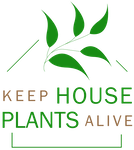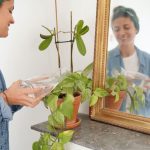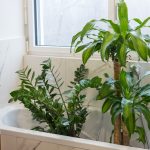You know that your houseplants need light and water, but what about food?
Let’s take a closer look at fertilizer, the different types, tips for choosing the best fertilizer for indoor plants, how and when to use it, and what happens if you use too little or too much.
Why do you need to fertilize plants?
In the outdoors, plants send out long roots to find nutrients in the soil that they need to grow well. Indoor houseplants don’t have that option as their roots are bound within their pot. The pot contains limited nutrients that are continually depleted by the plant’s roots or leached out through water drainage, so fertilizer is necessary to keep them happy and healthy. Indoor plant fertilizer is a blend of substances and chemicals that houseplants need in order to grow and thrive.
What nutrients do indoor plants need?
The three primary elements necessary for good plant growth are nitrogen (N), phosphorus (P) and potassium (K). Nitrogen promotes green growth and phosphorus promotes flowering, while potassium promotes strong structural growth and good roots. A fertilizer containing these three elements is considered a “complete” fertilizer.
Plants require at least 16 chemical elements and nutrients for normal growth, and most indoor plant fertilizers contain small amounts of these other trace elements.
The packaging on an indoor plant fertilizer will indicate the percentage of each nutrient element in the order of N-P-K. For example, a bag of 5-10-5 contains 5% nitrogen, 10% phosphorus and 5% potassium.
To encourage more flowering, use a fertilizer with a higher proportion of phosphorus (P), e.g. 10-20-10.
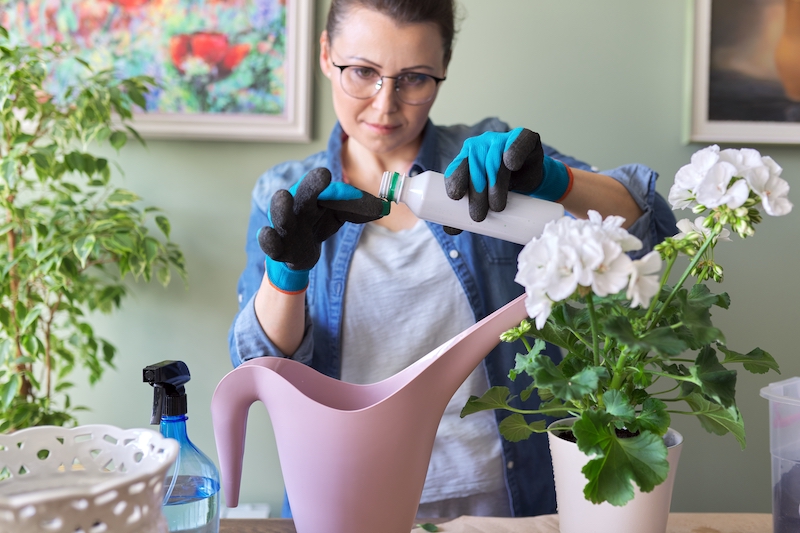
Succulents and delicate plants such as orchids, ferns and African violets are sensitive to fertilizer and can suffer damage from over-fertilization, and so they require particular nutrient needs and lower doses. Also look for fertilizers that are labeled for specific uses, for example, “Orchid Food” or “African Violet Food”.
Some plants don’t like fertilizer at all, like the Venus flytrap, as they obtain nutrients from the insects they catch.
Different types of fertilizers
Fertilizers come in two main types, liquid and solid (which can be spikes, pellets, pills, granules or powders). It’s generally recommended to use liquid fertilizer for indoor plants as it’s easy to use, can be diluted, and works quickly to release nutrients. Solid fertilizer is typically suited to large and outdoor plants as it works slower, breaks down over time into the soil, and doesn’t wash away easily in the rain.
Organic vs normal fertilizer: Which is the best fertilizer for indoor plants?
An indoor plant fertilizer can either be organic or inorganic (chemical). Organic fertilizers are derived from living organisms such as ground-up bone, manure, compost, fish emulsion and seaweed. Inorganic fertilizers are manufactured from non-living materials such as ammonium nitrate, superphosphate and potassium nitrate.
Which is better for your houseplants? Both come with advantages and ultimately the choice depends on your preference in terms of cost and environmental health. Chemical fertilizers are more affordable, more concentrated and deliver faster results. On the other hand, organic fertilizers improve soil structure, don’t cause toxic build-up, are less likely to cause damage to your plants due to lower concentrations, and are completely eco-friendly.
When should you apply fertilizer?
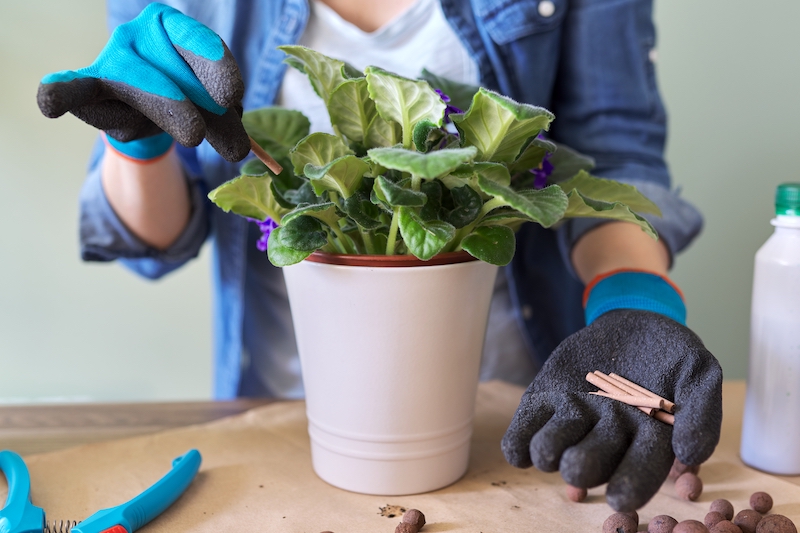
Plants need fertilizer most when they are actively growing. Spring is an ideal time to begin using indoor plant fertilizer on your houseplants.
Winter is a time of rest for many plants; they will grow less vigorously and therefore need less plant food. Flowering plants may still need fertilizing when budding and blooming, but in small amounts. Foliage plants generally require very little to no feeding between November and February.
You need to be particularly careful about feeding your plants during this time—don’t give in to the temptation to feed them just because you think they look as if they need food, or they don’t seem to be growing. Your plants are simply dormant; they do best with a yearly rest period and winter gives them a needed break.
How to apply indoor plant fertilizer
During spring and summer, feeding your plants every four to six weeks is the general practice, though this can vary depending on the time of year, the type of plant you have, the age of the plant, and the vigor of growth you want. Several light feedings are preferable to single heavy doses. Regular feeding in this way ensures your plants get all the nutrients they need without overfeeding them.
If you’re using liquid fertilizer for indoor plants, water the plant first before adding a few drops to the soil. Liquid fertilizer should only be added when the potting mix is moist, since doing so when it’s dry can harm the roots. For concentrated liquid fertilizers, add a few drops to a certain amount of water and then use the mixture for watering.
Although it’s generally agreed that indoor fertilizer is the best fertilizer for indoor plants, you can still use solid fertilizer for your houseplants. Feed your plants at the same time you’re watering them; apply the fertilizer over the soil and then water it in to allow the nutrients to distribute into the soil. For water-soluble powder fertilizers, prepare them using tepid water and ensure the powder is completely dissolved in the water before using the mixture to water your plant.
Each indoor plant fertilizer will vary in use, so it’s helpful to read the packaging label for guidelines and consider your own situations to determine the strength and frequency of application. If in doubt, err on the side of caution and use a smaller amount to avoid over-fertilization issues.
Signs your plants could benefit from fertilizer
Plants in need of fertilizer will exhibit one or more of the following symptoms:
- Slow growth
- Loss of luster and color
- Pale, washed-out leaves
- Yellow spotting on leaves
- Small, poorly colored flowers
- Absence of flowers
- Lower leaves drop early
- Weak stems
Signs your plants are being over-fertilized
If plants are given too much fertilizer, the nutrients in the fertilizer aren’t used and accumulate in the soil instead, which causes toxicity, burn and damage to the whole plant—even killing it. Signs that your plants have been over-fertilized include:
- Yellowing and wilting lower plant leaves
- Leaves dropping
- Crispy, brown leaf edges and tips
- Black, brown or rotting roots
- Stunted growth in summer; lanky and weak growth in winter
- White crust on soil surface
These signs will occur quickly after you fertilize.
There are some steps you can take to save your plants if you used too much fertilizer, or if you have a build-up of it in your plant pot. Give the plant a long watering to leach excess nutrients out of the soil through the bottom of the pot. Remove any crust of fertilizer on the soil surface with care and don’t take more than a quarter of soil with it.
We hope this post gives you a little more confidence about why, when and how to feed your plants! As you now know, the best fertilizer for indoor plants contains the right balance of minerals that deliver your houseplant’s nutritional needs. Feeding your plants the correct amount and at appropriate times of the year ensure they have lush foliage, healthy roots and beautiful flowers as well as continued, healthy growth.
